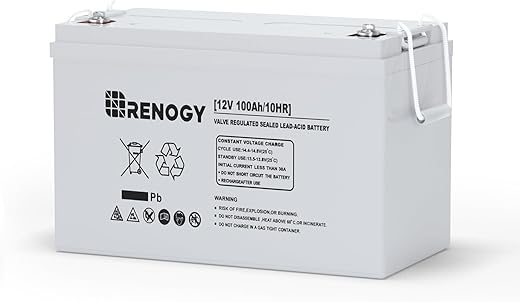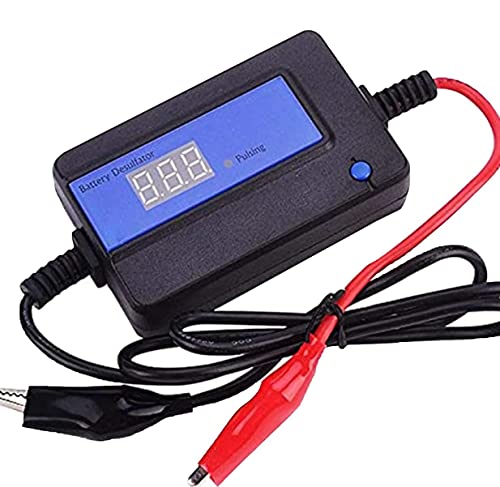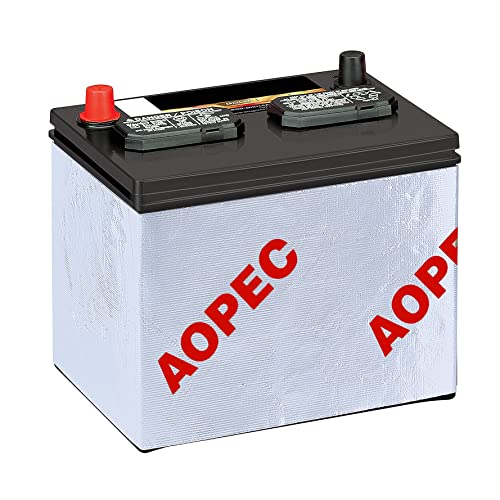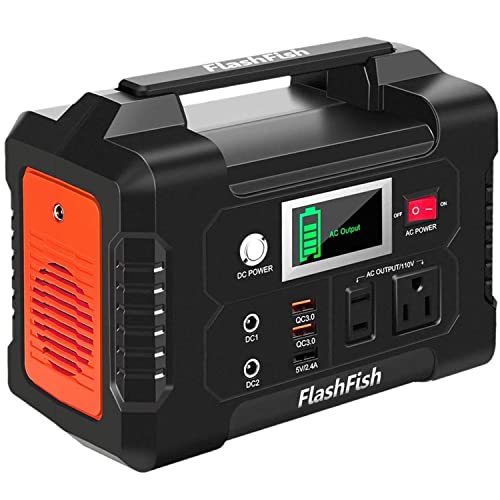In this step-by-step guide, we will explain how to maintain and care for your solar battery system. Maintaining and caring for your solar battery system is important to ensure its optimal performance and longevity. By following these steps, you can effectively prolong the life of your solar battery system and maximize its efficiency. So let’s get started and learn how to properly maintain and care for your solar battery system.
Top-rated solar battery systems for efficient energy storage
Understanding your solar battery system
Understand the components of your solar battery system:
- Battery: Learn about the key component responsible for storing electricity generated by your solar panels. The battery stores the energy during the day so you can use it at night or when the sun is not shining.
- Inverter: Familiarize yourself with the inverter, which converts the direct current (DC) electricity produced by your solar panels and stored in the battery into alternating current (AC) electricity that can be used to power your home appliances.
- Charge Controller: Discover the importance of the charge controller in preventing overcharging or deep discharge of your solar battery. It regulates the flow of electricity from the solar panels to the battery to ensure optimal charging and long battery life.
Understand how these components work together:
- Solar Panels: The solar panels convert sunlight into DC electricity. This electricity is then sent to the battery for storage.
- Battery: The battery stores the electricity generated by the solar panels. It supplies power to your home when there is no sunlight or when the demand exceeds the solar panel production.
- Inverter: The inverter takes the DC electricity stored in the battery and converts it into AC electricity, which can be used to power your home appliances.
- Charge Controller: The charge controller monitors the battery’s voltage, ensuring it doesn’t overcharge or discharge too much. It regulates the flow of electricity from the solar panels to the battery, optimizing charging and protecting the battery from damage.
Understanding these components and their functionalities enables you to make the most of your solar battery system. It ensures efficient energy storage and utilization, leading to increased self-sufficiency and reduced reliance on the grid.
Monitoring battery performance
Regularly checking the performance of your solar battery system is crucial to ensure optimal function and longevity. By monitoring the battery charge level, voltage, and temperature, you can identify any potential issues or changes that may arise. Here are some clear and easy-to-follow instructions on how to effectively monitor your solar battery system:
- Check the battery charge level: Regularly monitor the charge level of your solar battery to ensure it remains within the desired range. This can be done by using a battery monitoring system or checking the charge indicator on your solar inverter. For example, if your battery is designed to operate between 20% and 80% charge, ensure it does not exceed these limits to avoid overcharging or excessive discharging.
- Monitor the battery voltage: Keep a close eye on the voltage of your solar battery, as it can indicate its overall health and performance. Voltage readings can be obtained from your inverter or a battery monitoring system. For instance, if your battery’s voltage consistently drops below a certain threshold, it may indicate that your battery is aging and needs maintenance or replacement.
- Track battery temperature: Monitoring the temperature of your solar battery is essential to prevent overheating or extreme cold, which can negatively impact its performance and lifespan. Utilize a battery temperature monitoring system or check the built-in temperature sensor in your battery. If you notice abnormal temperature readings, take necessary action such as providing proper ventilation or insulation to maintain the battery’s temperature within the manufacturer’s recommended range.
Remember, regular monitoring allows you to detect and address any issues promptly, reducing the risk of significant damage or reduced performance of your solar battery system. By taking proactive steps and regularly checking the battery charge level, voltage, and temperature, you can ensure your solar battery operates optimally for years to come.
Maintaining battery cleanliness
- Keep your solar battery system clean by regularly inspecting it for any dirt, dust, or debris that may accumulate on the battery and its surroundings.
- Gently remove any buildup using a soft cloth or brush. Make sure to use gentle motions to avoid scratching the surfaces.
- Pay close attention to the vents and cooling fans of the battery, as they are prone to accumulate dust. Carefully brush away any dirt or debris from these areas.
- If you notice any stubborn stains or smudges, you can dampen the cloth slightly with water or mild soap solution. Avoid using harsh chemicals or abrasive scrubbers that may damage the battery.
- As part of the cleaning process, ensure that the battery and its connections are turned off and safely disconnected from any power source.
- Regularly clean the surroundings of the battery, such as the solar panels and wires, to prevent the accumulation of dirt and debris that can affect its performance.
- Periodically inspect the battery for any signs of corrosion or damage. If you notice any issues, consult a professional or your solar battery system manufacturer for assistance.
By following these simple steps, you can help ensure the cleanliness and optimal performance of your solar battery system.
Ensuring proper ventilation
To prevent overheating and ensure optimal performance of your solar battery system, it is crucial to provide adequate ventilation. Proper ventilation helps manage heat dissipation and prolongs the lifespan of the battery. Here are a few essential steps to ensure your solar battery system has proper ventilation:
- Allow for sufficient airflow: Position your solar battery in an area that allows air to circulate freely around it. Avoid placing it in confined spaces or areas with limited ventilation, such as small cabinets or tightly sealed rooms. Choose a location that provides ample space around the battery to promote natural airflow.
- Install venting solutions: In some cases, natural airflow may not be enough. In these instances, consider installing venting solutions such as fans or vents to actively remove excess heat from the battery system. These devices can help maintain a cool temperature and prevent the buildup of heat in the system. Consult a professional or refer to the manufacturer’s guidelines for proper installation and selection of ventilation solutions.
- Regular maintenance: As part of your routine maintenance, regularly inspect the area around the solar battery system to ensure there are no obstructions or debris blocking airflow. Clear away any obstacles that may restrict air movement, such as leaves, dirt, or other debris. Additionally, if you have installed venting solutions, ensure that they are functioning properly and free from any blockages.
Remember, proper ventilation is essential to prevent overheating and maintain the longevity of your solar battery system. By ensuring sufficient airflow and implementing necessary venting solutions, you can optimize the performance and efficiency of your solar battery system for years to come.
Checking connections and cables
Regularly inspect connections and cables to ensure the optimal performance of your solar battery system. Start by checking that all connections are securely fastened. This includes connections between the solar panels, inverters, batteries, and any other components.
Next, visually inspect the cables for any signs of damage or wear. Look for cuts, splits, or fraying. If you notice any issues, it is crucial to replace the cables promptly to prevent any potential problems or safety hazards.
Additionally, check for any signs of corrosion on the connections. Corrosion can lead to poor conductivity and limit the effectiveness of your system. If you find any corrosion, remove it gently using a wire brush or a solution specifically designed for this purpose.
Remember, faulty connections or damaged cables can contribute to system inefficiencies and even potential risks. By regularly inspecting and maintaining your connections and cables, you can maximize the performance and lifespan of your solar battery system.
Maintaining optimal battery charge
To maintain optimal battery charge for your solar battery system, you should always follow the manufacturer’s guidelines. This includes avoiding overcharging or deep discharging the battery, as it can significantly reduce its lifespan.
To prevent overcharging, ensure that your solar panels are properly sized and connected to a charge controller. This device regulates the charge going into the battery and prevents it from receiving too much power. Consult the manufacturer’s instructions to determine the appropriate settings for your specific system.
In order to avoid deep discharging, it is essential to monitor the battery’s state of charge regularly. This can be done using a battery monitor or by observing the battery voltage with a voltmeter. When the battery reaches a low state of charge, it is important to recharge it promptly. Leaving a battery discharged for an extended period of time can lead to irreversible damage.
By following these guidelines, you can ensure that your solar battery system is properly charged, maximizing its lifespan and overall performance. Remember to consult the manufacturer’s instructions for specific recommendations and to reach out to a professional if you encounter any issues or have further questions.
Seeking professional assistance
If you encounter any issues or are unsure about any aspect of maintaining your solar battery system, seek professional assistance. Here are some key reasons why it is advisable to do so:
- Expert advice: Professional assistance ensures that you receive accurate and reliable information specific to your solar battery system. They have the necessary knowledge and experience to address any concerns or questions you may have.
- Guidance on maintenance: Solar battery systems require regular maintenance to ensure optimal performance and longevity. Professionals can guide you through the maintenance process, offering step-by-step instructions on tasks such as cleaning panels, checking connections, and monitoring battery performance.
- Troubleshooting support: Should you encounter any issues with your solar battery system, professionals can assist in diagnosing and resolving the problem. They have the expertise to identify the root cause of the issue and provide suitable solutions, minimizing downtime and potential damage.
- Safety considerations: Working with solar battery systems involves electricity, and safety should always be a priority. Professionals can advise on safe practices, ensuring you take necessary precautions to prevent accidents or electrical hazards.
- System optimization: By seeking professional assistance, you can maximize the efficiency and performance of your solar battery system. They can provide recommendations on system optimization, such as adjusting settings or upgrading components, to help you achieve the best results.
Remember, seeking professional assistance is a proactive step to ensure that you have the necessary support and expertise to maintain and troubleshoot your solar battery system effectively.
Key Considerations for Maintenance
In conclusion, caring for and maintaining your solar battery system is crucial to ensure its longevity and optimal performance. Throughout this guide, we have highlighted the key steps involved in maintaining your system.
Regular monitoring of your solar battery system allows you to detect any issues early on and address them promptly. This includes monitoring battery capacity, charge levels, and any abnormal behavior. By staying vigilant, you can prevent potential problems before they escalate.
Proper maintenance of your solar battery system is essential for its efficiency. Regularly cleaning the solar panels, inspecting the wiring and connections, and ensuring proper ventilation are all important tasks. Additionally, following the manufacturer’s recommendations for battery maintenance will extend its lifespan.
It is also important to remember that sometimes professional assistance is necessary. If you notice any significant issues or are unsure about how to handle a specific problem, don’t hesitate to seek help from a qualified technician. They have the expertise and experience to address any complex issues that might arise.
By following these guidelines, you can ensure that your solar battery system remains in good working condition and provides you with reliable renewable energy for years to come. Regular monitoring, proper maintenance, and professional support when needed are key aspects of caring for your solar battery system effectively.






![[Upgraded] 30A Solar Charge Controller, 12V/ 24V Solar Panel Regulator with Adjustable LCD Display Dual USB Port Timer Setting PWM Auto Parameter](https://m.media-amazon.com/images/I/41NTKPSODmL.jpg)












